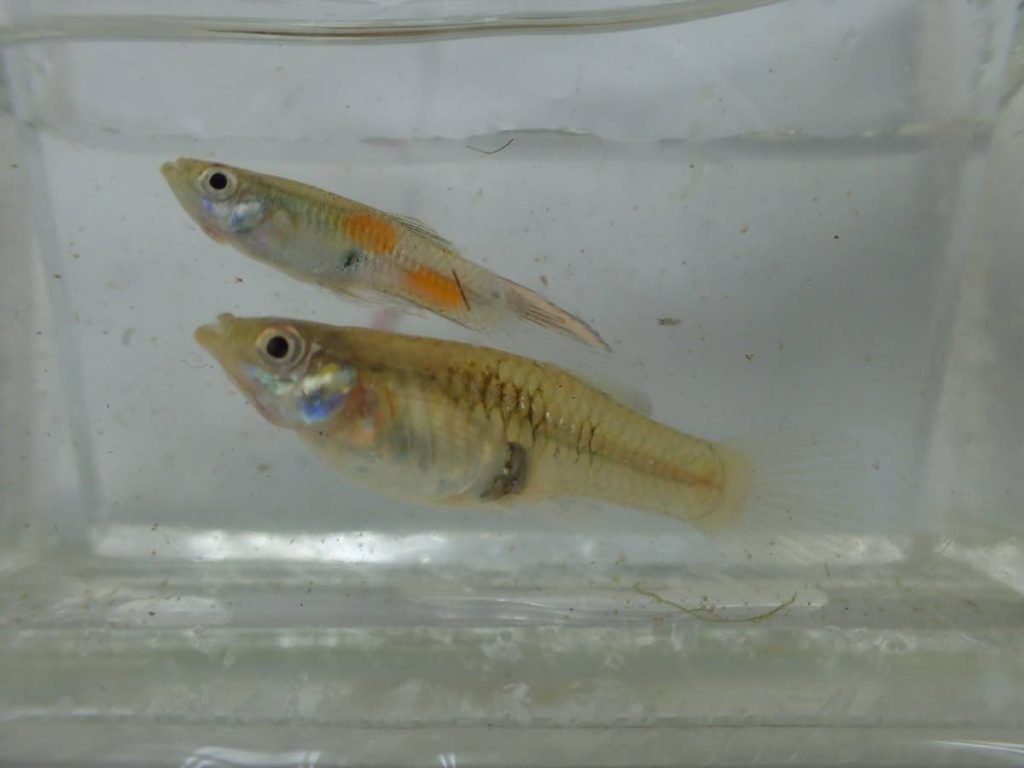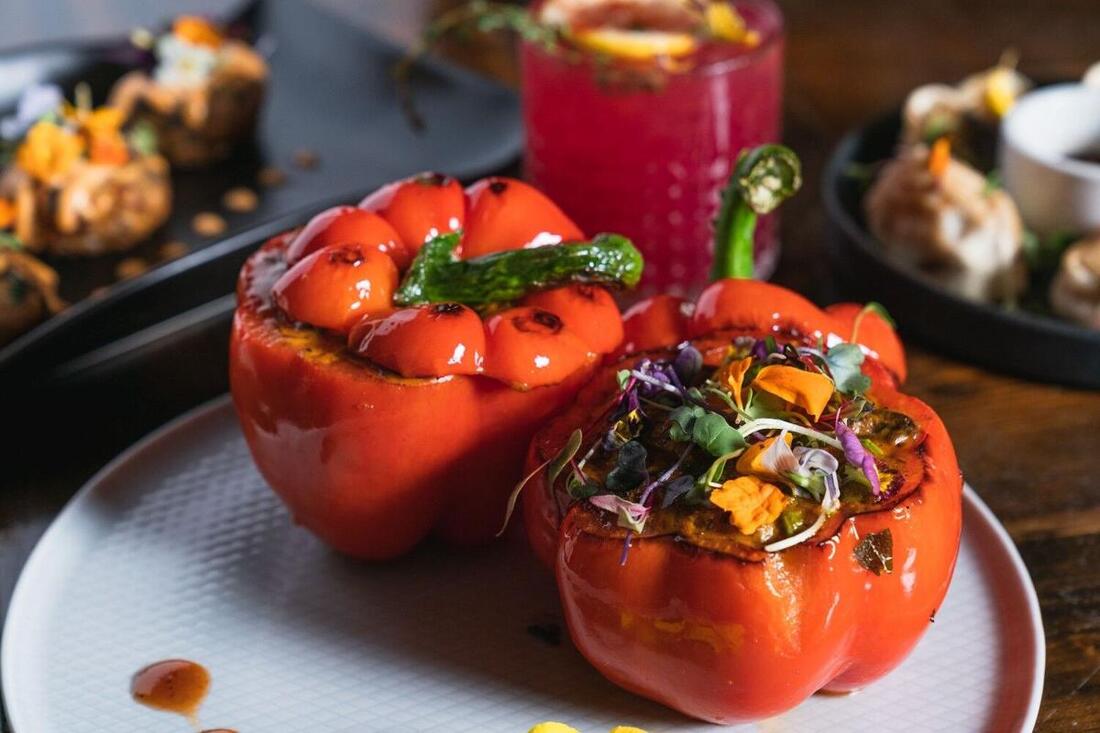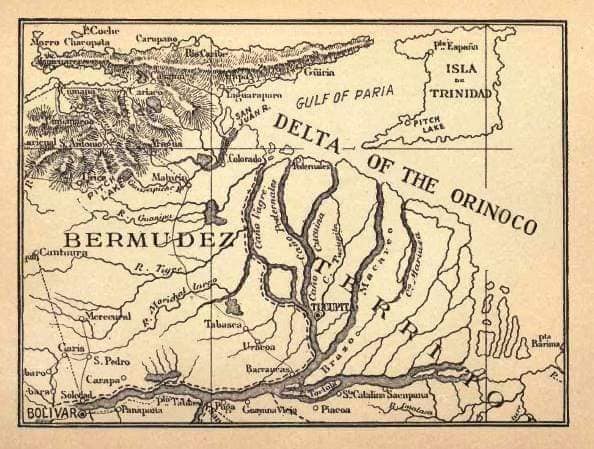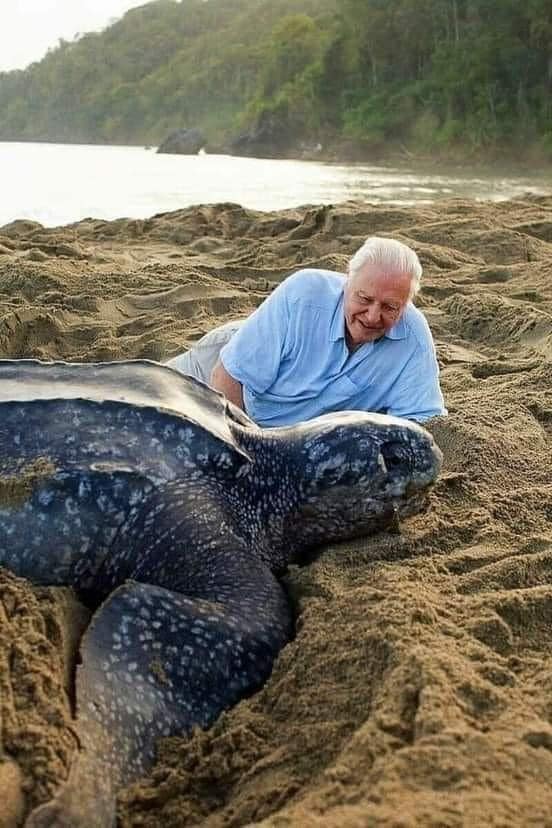|
0 Comments
Derron Watkins is the latest T&T national to be awarded an Erasmus Mundus Joint Master’s Degree (EMJMD) scholarship.
Watkins, who obtained two bachelor’s degrees in economics and psychology from the UWI, St Augustine, will read for a Master’s degree in Work, Organisational and Personnel Psychology at the University of Valencia, Spain and at the University of Coimbra in Portugal. He will journey to Spain to begin this course of study in September. According to Watkins, hard work and a passion for psychology are the drivers of his success. It was while studying for first degree that he realised his true interest lay elsewhere.“When I entered UWI in 2013, I decided to pursue a major in economics,” he stated. “But along the way I fell in love with psychology.” Not being one to quit, Watkins decided to finish his degree rather than switching majors and then made the decision to return to UWI for a second undergraduate degree in psychology. It was not an easy road. With GATE funding unavailable for this second degree, Watkins needed to work full time to make ends meet and to pay tuition and other expenses. Still, he was able to graduate with first class honours. A true change maker, it was while working at one minimum wage job and observing how management treated their employees, that he decided that industrial and organisational psychology were the keys to his future career. “I want to help companies to realise the true potential of their employees, while ensuring that employees in turn feel valued and rewarded,” he said. Speaking about his future plans at the end of his study abroad, Watkins, currently a business operations assistant II in the social services unit of the Judiciary of T&T, Family and Children Division’ said he hopes to, at least initially, be able to return to his job providing services for families and children. Longer term, he plans to establish his own consulting business. The Erasmus Mundus Joint Master’s Degree Scholarship programme is highly sought after around the world by individuals seeking to study in Europe. It allows scholars the opportunity to read for a postgraduate degree in at least two countries in the EU, all expenses paid. In 2021, 2,756 scholarships were awarded to individuals in 141 countries. Watkins is one of an elite group of approximately 100 individuals from T&T who have been awarded the scholarship since 2005. Commenting on Watkin’s achievement, Charge d’Affaires ai of the EU Delegation, Ze Alves-Pereira said: “We are very happy that this enterprising and hardworking young man was chosen and we celebrate with him and his family this achievement. We hope that he will find his time in Europe to be an enriching one and that he will return to Trinidad fully prepared to play his part in this country’s development, as so many of his predecessors have done.” He added: “There are so many talented individuals in T&T who can benefit from this opportunity to expand their horizons and experience and I would like to encourage more nationals to apply to the Erasmus programme.” (Source: T&T Guardian, July 16, 2021) Today, the guppy is bred around the world to create different varieties. - Photo courtesy Dr Ryan S Mohammed Did you know that the guppy (Poecilia reticulata) was named after a Trinidadian?
You may be wondering, how did this happen? Well, in 1866, Trinidadian Robert John Lechmere Guppy sent specimens of the fish from TT to the Natural History Museum in London. In honour of Guppy’s contribution, which helped popularise the fish and expand research on it, British zoologist Albert Gunther named the fish after him. But the guppy’s name isn’t its only link to TT. Today, the fish has been bred all over the world to create different varieties and has become wildly popular in the ornamental trade. However, the original wild fish bred to create these varieties came from TT. Dr Ryan S Mohammed told Newsday Kids, “The wildtype of all fish in the ornamental trade that are referred to as guppies would have originally come from Trinidad. “The guppy has been selectively bred in places like the Netherlands, Singapore, Thailand, China, Europe and in the US for different colour patterns. “That’s why you have so many different varieties of the guppy with big tails, small tails, split tails, leopard colours, albinos, red tails, black tails…you name the colours of the rainbow, you’ll find it on a guppy.” Mohammed is an aquatic ecologist and has researched a wide variety of species found in ecosystems like mud volcanoes, wetlands, rivers, estuaries, and reefs. He particularly loves doing research on aquaculture (the farming of fish) and alien invasive species. Mohammed said that given different-coloured guppies have emerged, since they have been bred, they have been nicknamed the “rainbow fish.” But even within the species, there are interesting colour variations among individual fish. “The males are usually smaller than the females, but the males are more colourful than the females. Just like their physical characteristics, the uses of guppies also vary. Though they are a popular pet species, that’s not their only use. Varieties of the guppy have been introduced in places like Hawaii and Barbados to act as a natural pest control and feed on mosquitoes. These fish are also used in scientific research. “Guppies are used in a lot of different scientific research to investigate evolution. “You’ll find that different populations of guppies, found in the wild of the same country, will have different colour patterns. “These colour patterns are indicative of different adaptations to surviving different things like predator pressures and water quality. “For example, guppies can be found in areas that have very low dissolved oxygen and very poor-quality water, but they still survive.” Because of their adaptability, Mohammed said the guppy is one of the few species of fish that can be found in the Pitch Lake. “The Pitch Lake only has three species of fish and guppies are the most abundant of the three species. “This is because they are able to adapt to deal with elevated water temperatures as well as the hydrocarbon there is in the lake.”  FOR Vidya Maharaj, home is where the heart is, and one of the ways she expresses her love is through food. Maharaj runs a successful India-fusion vegetarian restaurant in Miami called Diya, where she is proud to show off her Indo-Trinidadian heritage. Serving up aloo-pies and doubles with her twist, Maharaj enjoys experimenting in the kitchen and surprising customers’ palettes with an array of flavours. Originally from Sangre Grande, Maharaj left high school to further her studies in the United States. She says food was not initially part of her plan, but acknowledges that life itself can take you down many paths. Maharaj said right after she graduated from Northeastern College, she went to Miami to become a doctor, but instead she became a scientist. “I am the vice-president of a biotech company that submits FDA (Federal Drug Administration) approved new drugs and therapies during the day, and at night, I am chef,” she said. Maharaj says it took some convincing from her brother to share her passion for cooking with the world. “Diya was established in November 2018 and was officially opened for fine dining in January 2019. The name Diya is a combination of my mom’s name (Daya) and my name Vidya,” she said. Maharaj is the executive chef at Diya, and as a bonus, she works with her family: her younger brother Dharam, his wife Valeri, and her older brother Muneshwar. Her 20-month old niece Rani is also a part of the family’s food legacy. Although her brother, Dharam, actually established the restaurant, Maharaj says it was her intervention at a critical stage that caused it to thrive. She said, “My brother always loved my cooking and wanted me to open a restaurant. He said I had it in me to be an amazing chef. I declined as I was at the height of my career in the biotech world. I finally said yes in January 2019 when I attended his soft opening and realized he would lose all his money if I didn’t intervene. “I told my job it was a family emergency and immediately took four days off. It was a Tuesday. I told him we would do a reopening on Friday night. I started on the menu on my way home and tried to incorporate things I like and a fusion of Miami.” Maharaj said she never doubted that she could be an integral part of a successful restaurant. She was more concerned that her brother, Dharam, would lose it all. “He and his wife had just had a baby girl two months before. I had to step in. Love for my family was greater than anything. I am lucky I have a very supportive husband who lets me do these things,” she said. Maharaj had absolutely no professional culinary background, but her gamble paid off. She said, “We serve fusion traditional Indian cuisine. In the beginning, we used to serve up traditional Trini aloo pie and doubles and Indian street food. It changed due to manpower and popularity as a result of the pandemic. I moved towards more traditional Indian cuisine and, recently, world fusion. For example, we do kofta pasta, a spin on traditional malai kofta. We still serve doubles but on an elevated level and call it channa taco.” Maharaj says her fusion of traditional Indian cuisine costs between $10 - $30US per dish, and her channa taco is popular with customers. The pandemic has not only been a colossal global-health crisis, but it has also been the toughest challenge for the restaurant industry to date. While some countries have been able to roll back restrictions, some restaurants may never reopen. Maharaj says in the ever-changing economic landscape, Diya has had to adapt and refine its fine-dining restaurant model to move forward in the new normal. She said, “We opened before the pandemic and had to do whatever it took to stay open. We are growing by the day, and people are saying our dishes are different but worth Michelin stars. We pride ourselves on service, food, and presentation.” For first-timers to the restaurant, Maharaj recommends they try Gobi Manchurian, channa taco (doubles), kofta pasta, and their signature ras malai tres leches. Given the present economic landscape, she does not plan on opening a branch of Diya in Trinidad soon, but is planning on expanding her menu to include more elevated Asian cuisine. The restaurant is located at Sunset Harbour in Miami. Source: Sunday Express, Aug 4, 2021 Written by the late Angelo Bissessarsingh in 2010 is dedicated to the First Peoples of Trinidad and Tobago.
TRINIDAD’S FIRST PEOPLES. Sketchy school textbooks have taught generations of Caribbean children numerous myths about the region’s First Peoples such as the conflicts between the savage Caribs and peaceful Arawaks when in reality, there were many different cultures and languages. Around eight thousand years ago, a small band of Neolithic peoples crossed a narrow land bridge from the continental mainland of South America into Trinidad. They carried little, save perhaps a few treasured ceremonial artifacts made of green-stone that had been quarried from the misty heights of the Roraima Mountains. In the south-western part of Trinidad they founded two settlements on the fringe of a mangrove swamp which provided all the necessities of life. These peoples were hunter-gatherers and lived off the bounty of nature- from the roots of the mangrove they plucked oysters whose discarded shells formed a great refuse heap that over a millennia of unchanged habitation grew to be a hill almost twenty feet high. The fruits of the wild and the starchy bulbs of water plants were their vegetables, pounded and processed with simple stone tools. Small land mammals were hunted for meat with bone-tipped spears. Bone was also used to make bi-pointed fishhooks. Crude stone axes felled small trees which were used to make round huts. Cut off from the mainland by rising sea levels. This wave of hunter-gatherers eventually developed the technology to manufacture dugout canoes and may have reached Tobago. Their remains have recently been discovered in Barbados as well, but their presence in Trinidad makes this island the oldest inhabited place in the Caribbean. In the 1960s and 70s the shell mound , located in what was by then known as Banwari Trace in the sleepy village of San Francique, was excavated by the late Peter O’Brien Harris and yielded the remains of Trinidad’s oldest ‘resident’. Banwari Man (or woman) is a human skeleton approximately five thousand years old that was found buried in a foetal position. A tenuous cultural and anthropological connection has been established between Banwari Man ((or woman) and the present-day Warao First Peoples of the Orinoco Delta in Venezuela. It is now housed at the University of the West Indies Zoology Museum at St. Augustine. In the wake of the archaic hunter-gatherers came waves of pottery-making cultures beginning in 250 B.C These were peoples from the Orinoco Delta and their ceramics were durable and highly decorated. The adornments were fanciful heads and shapes in clay which anthropologists have identified as an intense theological phenomenon rooted in religious practices that deified zoomorphic (animal) and anthropomorphic (human) spirits. The earliest pottery cultures are known as Saladoid because the ceramic style was first classified at Saladero in Venezuela. Later movements of first peoples came to Trinidad and brought with them new agriculture, lithics (stone-tool tech), and ceramics. Their refuse heaps or kitchen middens can be found throughout the island and several are very extensive indeed. One such discovery was recently made under the foundations of the Red House in Port-of-Spain which was erected in 1848 and until its recent renovation began, housed the Parliament of Trinidad and Tobago. The find included potsherds and human remains. Although Columbus stumbled upon the island in 1498, the waning of the Amerindian presence in Trinidad came in the wake of the first permanent Spaniard settlement at San Jose de Oruna (St. Joseph) in 1592. Those natives not killed off by disease or overwork were herded into small villages called Encomiendas which were little more than serfdom under the control of a Spanish grandee. The alternative from 1687 was residence in one of the several missions established by Capuchin monks which were only mildly preferable to the Encomiendas. An uprising at the mission of San Francisco de los Arenales (near present-day San Rafael village) saw the Amerindians slaying three priests before being pursued and brutally punished. The missions were really the end of Amerindian culture since they adapted into the Spaniard mode of existence. The missions lasted after the British conquest of 1797 and were dissolved in 1840. The mission villages became desolate and the people in them resigned to their fate. In 1825 a rare diary entry gave a glimpse of what they had become: “They seem to be the identical race of people whose forefather Columbus discovered, and the Spaniards worked to death in Hispaniola. They are short in stature, (none that I saw exceeding five feet and six inches,) yellow in complexion, their eyes dark, their hair long, lank, and glossy as a raven’s wing ; they have a remarkable space between the nostrils and the upper lip, and a breadth and massiveness between the shoulders that would do credit to the Farnese Hercules. Their hands and feet, however, are small-boned and delicately shaped. Nothing seems to affect them like other men ; neither joy nor sorrow, anger nor curiosity, take any hold of them. Both mind and body are drenched in the deepest apathy; the children lie quietly on their mothers’ bosoms; silence is in their dwellings.” Arima was the largest and still retains vestiges of its past as well as a vibrant First Peoples group, the Santa Rosa Carib Community which dedicates itself to the preservation of native culture and championing indigenous affairs. Annaparima (San Fernando Hill) is a sacred site and is now visited annually by First Peoples including the Warao of the Orinoco Delta who perform religious ceremonies there. A slow but sure interest in the truths of our first settlers is now firmly rooted and hopefully will continue to grow. My Sheppard aunts, sisters Jessie Brash and Ida de Sousa ran a school at 38 O’Connor Street, Port of Spain, where they lived. This little clip captures a nostalgic glimpse of school days back then. It was Friday morning 10 February 1989, the Friday after Carnival. Auntie Ida loved children. When this was filmed, she had been widowed for almost 16 years, and was already 75 years old, mother of 3, grandmother of 5 and great-grandmother of 11. She herself was the fourth child in a family of 12 children! Her older sister Jessie was a pianist and taught the children all kinds of songs - music was always a big part of school life there. The desks, blackboard with arithmetic, copy books, plastic lunch boxes and teacher keeping order say it all. I’m sure the kids in this little video have happy memories of their early school days with Auntie Ida and Auntie Jessie. (Source: Virtual Museum of T&T Aug 8, 2021) Sir David Attenborough,next to a huge leather back turtle.This was filmed in Trinidad and Tobago.Look at the size of that beauty!The average weight is 600-800 lbs,but they can weigh over a 1,000.They can also reach 8 feet in length.What a gorgeous creature.
Source: Nautical Solutions , July 15, 2021 |
T&T news blogThe intent of this blog is to bring some news from home and other fun items. If you enjoy what you read, please leave us a comment.. Archives
July 2025
Categories
All
|









 RSS Feed
RSS Feed